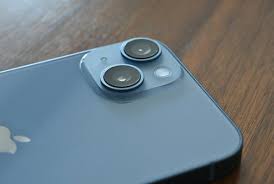This small robot can melt, escape a prison by squeezing through tight bars, and then solidify and carry out its duties.
The metal microbot, comprised of liquid metal microparticles that can be steered and reshaped by external magnetic fields, has been compared to the cyborg assassin T-1000 from “The Terminator” film series, portrayed by Robert Patrick, who could morph around solid objects before launching a murderous rampage.
In contrast to the film, the robot’s creators believe their invention may be utilised for good, notably in clinical and mechanical settings, to reach difficult-to-access areas.
The robot was presented as part of a study on metal microparticles, which are known as a sort of magnetoactive phase transitional matter that can change shape, move rapidly, be readily controlled, and carry many times its own body weight.
The study’s authors, who published their findings in the journal Matter on Wednesday, constructed the robot using a combination of metals with a low melting point.
Chengfeng Pan, an engineer at the Chinese University of Hong Kong and co-author of the study, told The Washington Post, when asked about his discovery and the comparisons to the Terminator movies, “This material can achieve Terminator-2-like performance, including fast movement and heavy load bearing when it is in its solid state, and shape-changing in its liquid state.”
This material system has the potential to be employed in flexible electronics, healthcare, and robotics.
By bombarding the robot with magnetic fields at alternating currents, scientists were able to raise its temperature to 95 degrees Fahrenheit (35 degrees Celsius) and transform it into a liquid in 1 minute and 20 seconds. Once turned into liquid metal, the figurine could be guided by additional magnets through the microscopic gaps of its cage, displaying its malleability.
It is the first time that a material capable of both shape-shifting and carrying heavy loads has been identified for use in microbots, according to scientists from Chinese, Hong Kong, and American universities who conducted the study — solving a riddle that had previously baffled miniature robot designers who had struggled to achieve both morphability and strength in their designs.
In its liquid state, the robot was capable of elongating, dividing, and merging. In its solid state, it could be manoeuvred at speeds surpassing 3 mph and could transport items weighing up to 30 times its own mass. The combination suggests that a robot created from the material may be used to fix electronics in hard-to-reach locations, for instance by acting as a temporary screw or by soldering circuits in tight spaces.
In a separate experiment, researchers demonstrated how the robot may be used to remove an unwelcome foreign object from a model human stomach. Scientists guided the sub-0.1-inch-wide solid-form robot through the artificial organ until it discovered the foreign substance. It was then melted by remotely controlled magnetic fields, stretched in its new liquid metal state around the object, and then cooled back to a solid state, allowing it to pull the foreign object out of the chamber.
The shape-shifting material is the most recent advancement in the expanding field of small robotics, where scientists are racing to uncover possible medicinal and mechanical applications for tiny robots in daily life.
Recent advancements in microrobotics have produced robots small enough to potentially crawl through human arteries, clever enough to be taught to swim, and able to fly through the air using tiny onboard power supply.
Professor of Robotics at ETH Zurich Brad Nelson, who was not a part of the study, told The Washington Post, “We’re still in the early stages of determining what kinds of materials can do this.” He adds that the transport of medications to the brain or the treatment of blood clots is one of the most intriguing areas of research in microrobotics at the present time.
Nelson believes that the metal microbot presented on Wednesday is educational, but its usage of neodymium iron boron, which is hazardous to people, implies that it would only be clinically safe for use inside humans if it were totally removed afterward.
“Those investigating the clinical applications of these gadgets are interested in materials that can deteriorate or remain in the body without harming the patient,” Nelson explained.
For Pan, analogies between his work and the T-1000 character from Terminator are understandable, but have their limits. “Our robot still requires an external heater for melting and an external magnetic field for movement and form control,” he explained. “Terminator is completely independent.”
Nelson also contends that there is no reason to be concerned about accidentally developing a cyborg assassin.
“I don’t believe it’s possible to inject anything into someone and then have microbots swim into their brain and take control of their thinking, or something equally absurd.
Nelson states, “The technology isn’t there, and I don’t see it getting there,” adding that if the technology were to be tried in clinical settings, precautions would be in place to prevent against such risks.
Related Articles:
With Nvidia Eye Contact, you will Never Again Avert Your Gaze from A Camera.
There Is a New vintage Technology that Generation Z Is Obsessed With.
Airtel Now Offers Free Disney+ Hotstar with These Prepaid Plans








